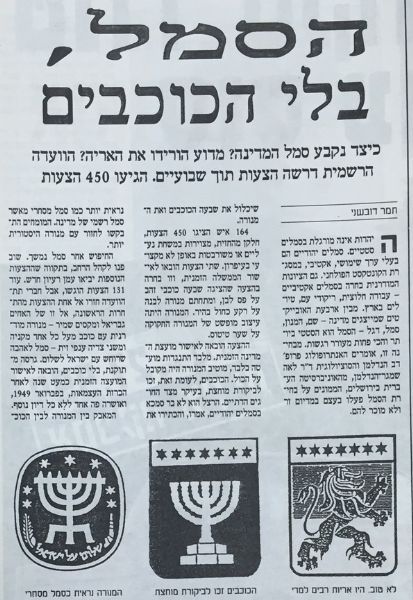The emblem of the State of Israel is a herald with a seven-branched candelabrum (menorah) in its centre which is flanked by olive branches and at the bottom the word "Israel". There are two main versions of the symbol: One includes the menorah, olive branches and the word "Israel" in gold on a deep blue background. In the other they appear white or silver/grey on a blue background. The first version is mainly used when the state symbol is displayed by itself. The second version is used on the President’s banner or when the symbol appears on small flags and buntings. On documents the symbol is often displayed in black and white (the menorah and other elements in white on black background). Various institutions display it as a 3D relief with no significant difference between the colours of the elements and the background.
The State Emblem was designed by the brothers Gabriel and Maxim Shamir. It was chosen from numerous proposals submitted to the Flag and Emblem Committee established by the Provisional State Council. The committee issued a tender calling on residents of the state to submit designs for a State Emblem. The tender detailed recommendations for elements to be included in the emblem. The committee reserved the right to discuss and review any proposal submitted.
The Committee received 450 proposals from 164 people. Three proposals were selected for further consideration: by Wallish and Strotski, by David and Schechter, and by the Shamir Brothers. The Wallish and Strotski proposal included a shield divided into two parts – in the largest lower part a seven-branched menorah design appeared in relief similar to the one on the Arch of Titus in Rome and at the top were the seven stars of Herzl. The Proposal by David and Schechter was based on a mosaic from the ancient synagogue in Jericho. The seven-branched menorah depicted in the mosaic stands on three legs (and not on a wide base as the one in the Arch of Titus, see below) on either side were a shofar and a lulav and below the inscription "Peace upon Israel" (from Psalm 125). In David and Schechter’s proposal the menorah appears in a design similar to that in the Jericho synagogue mosaic with Herzl's seven stars surrounding it on three sides. Underneath were an olive branch, an etrog, a lulav and a shofar and the motto: "Peace on Israel".
The original proposal by the Shamir Brothers had a shield with a modern schematic design of a seven-branched menorah in its centre. In their proposal Herzl's seven stars were arranged above the menorah in a line with the olive branches on either side. It is possible that the Shamir Brothers were influenced by a quote from the prophet Zechariah (Zechariah, Chapter IV) in which the angel shows the prophet " . . . and behold a candlestick all of gold, with a bowl upon the top of it, and his seven lamps thereon, and seven pipes to the seven lamps, which are upon the top thereof: And two olive trees by it, one upon the right side of the bowl, and the other upon the left side thereof”. Shamir Brothers themselves did not mention in their proposal that the passage of Zechariah inspired their design. However, they did so in an interview given to the newspaper Ma'ariv on 16 February 1949 explaining their work in detail. Consequently, we do not know if it was a coincidence or a deliberate imaginary link.
The Committee decided that the Shamir Brothers proposal will form the basis for the state emblem but required some changes to their design. The modern design of the menorah did not seem appropriate to the members of the committee and they preferred the design that appears in the relief on the Arch of Titus. The relief depicts a procession of slaves and soldiers returning to Rome after the Roman victory over Judea and the destruction of the Temple in Jerusalem in 70 AD. The use of the Roman relief was to mark the return of the Menorah to its original home. The use of olive branches was liked by Committee members and was preferred to the use of symbols such as a palm branch, a citron or a ram's horn as they sought to avoid the use of symbols of a religious nature. The inclusion of the olive branch as a symbol of peace seemed preferable to the use of the motto "Peace on Israel” but the committee requested to add the name "Israel" in Hebrew beneath the Menorah. Herzl's seven stars were eventually omitted from the final design.
A short video about the national emblem designed by the Shamir brothers
This is how the State emblem was chosen
The original document that raised the need for the State emblem was discovered by Dr. Moshe Fuchs and Dr. Assaf Tarkatinsky in the State Archives
A video article in the Kan TV station from 2017 (in Hebrew).
A sketch of the final version of the 1949 State Emblem
The sketch of the State Emblem signed by David Ben Gurion displayed at the La Menorah exhibition in the Vatican.
This is how the State Emblem and the Post Office came about - article by Herzl Hakak
Invitation for design of Emblem and Flag
Draft design for State Emblem
Invitation for submissions
Notice to use the Titus Menorah on the Emblem
Letter re: Shamir Proposals
Letter confirming choice of design for State Emblem
The "Fathers" of the new Israel State Emblem
40th meeting of The Provisional State Council
Official notice of the new State Emblem
State Emblem - after nine months of birth
Artice on the selection of the emblem. Origin ??
Haolam Hazeh 22/4/1993 (Part - 1)
Haolam Hazeh 22/4/1993 (Part - 2)


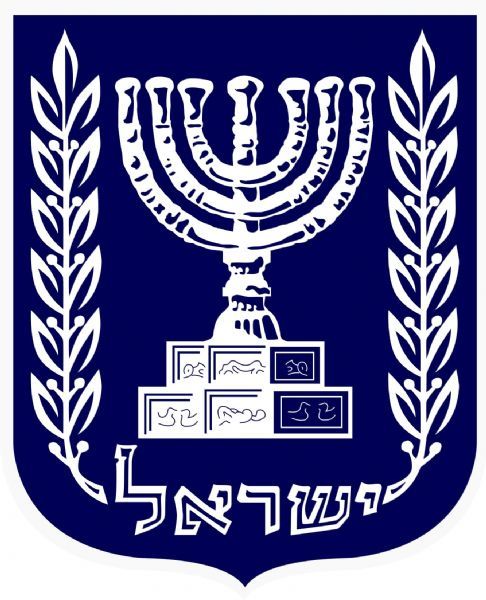
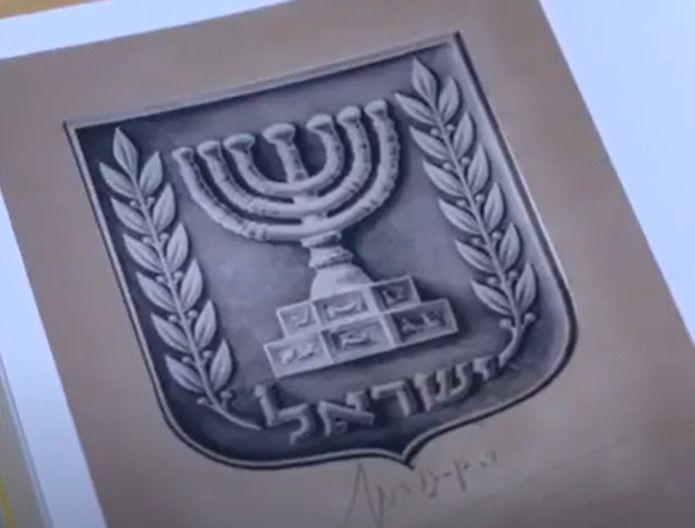
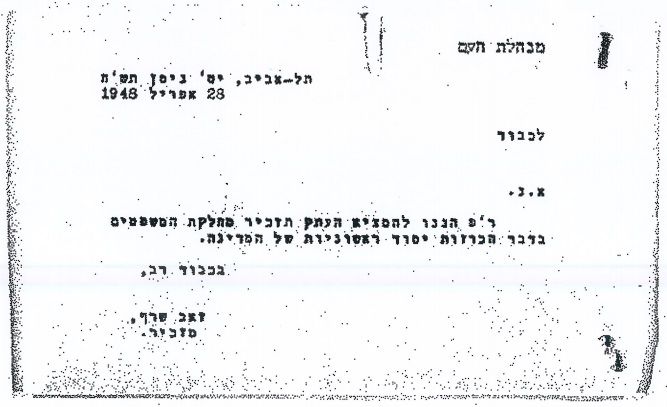
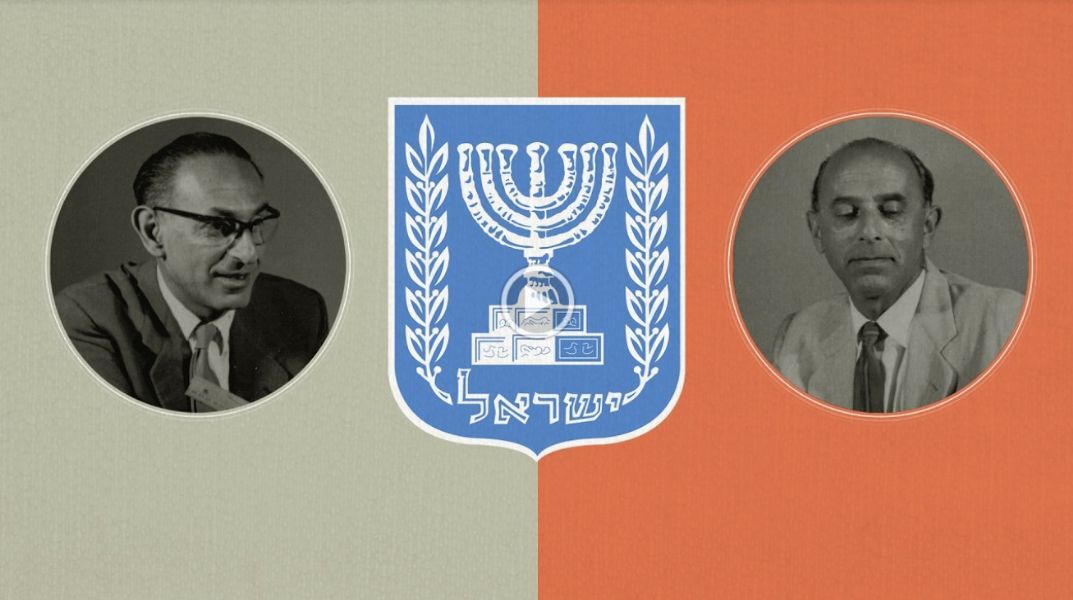
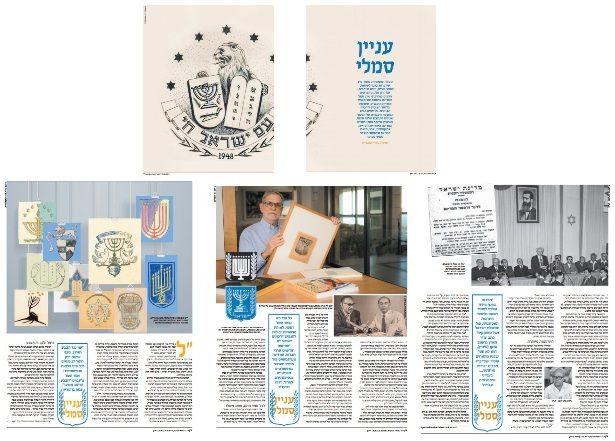

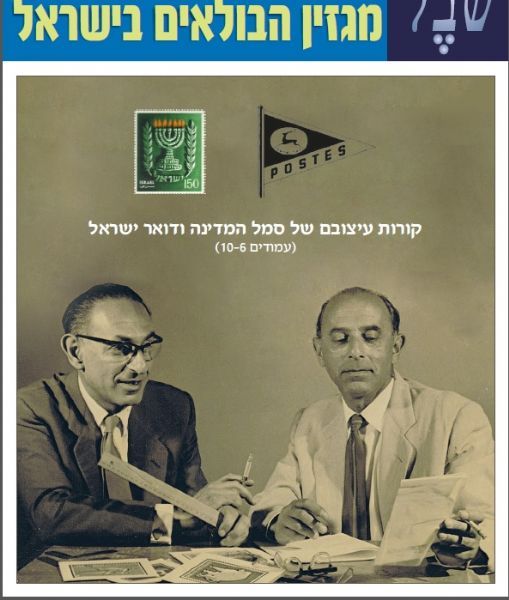
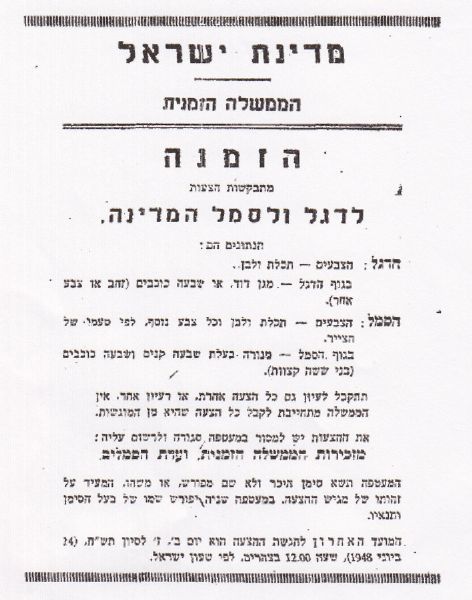
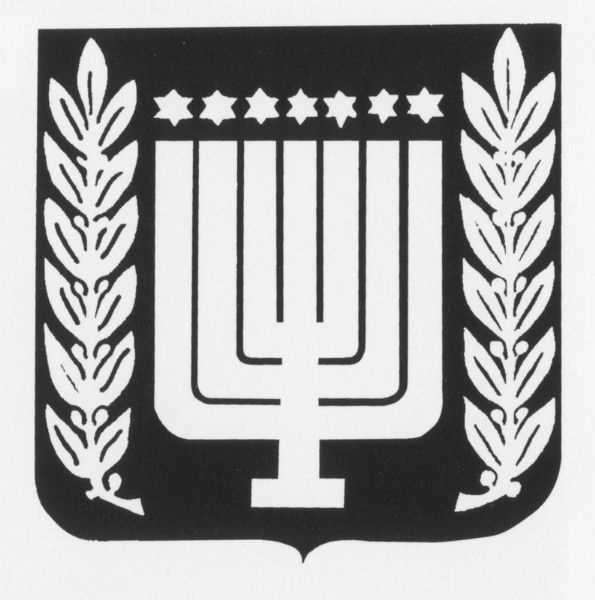

.jpg)
.jpg)
.jpg)
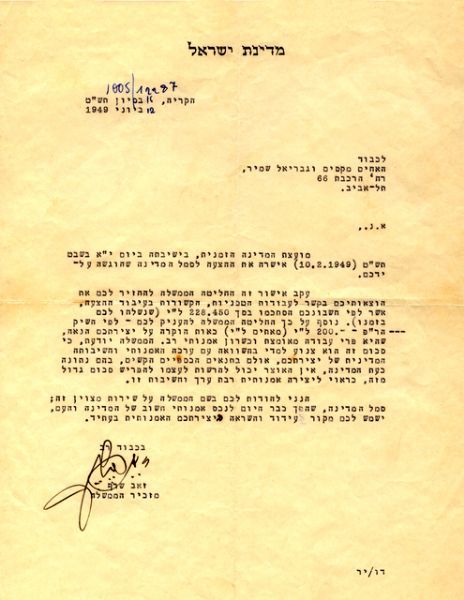
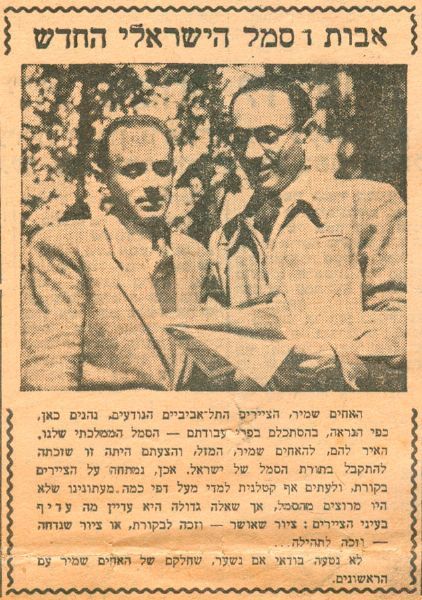
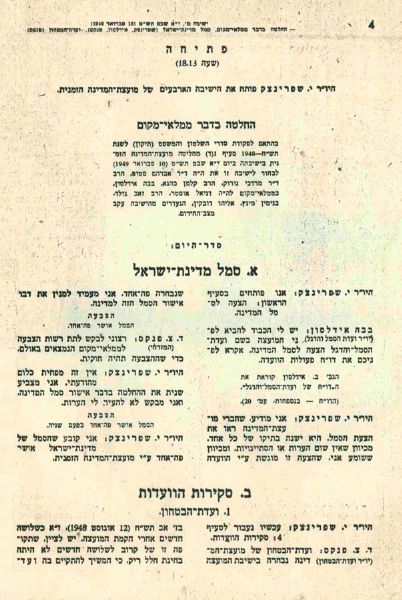

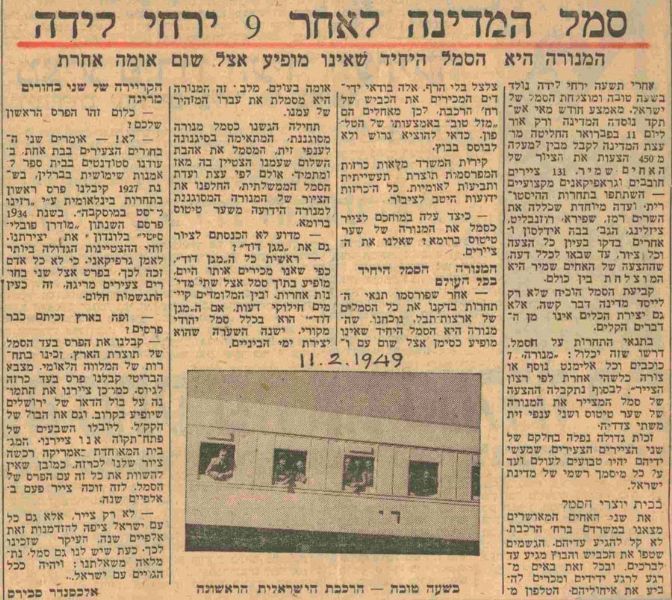
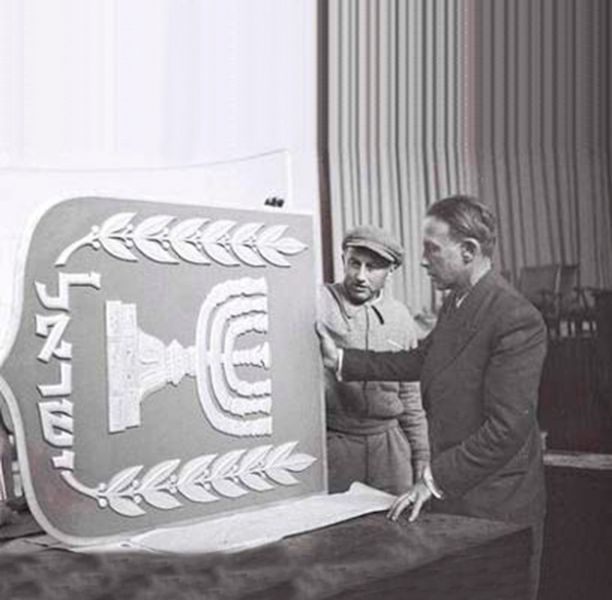
.jpg)
